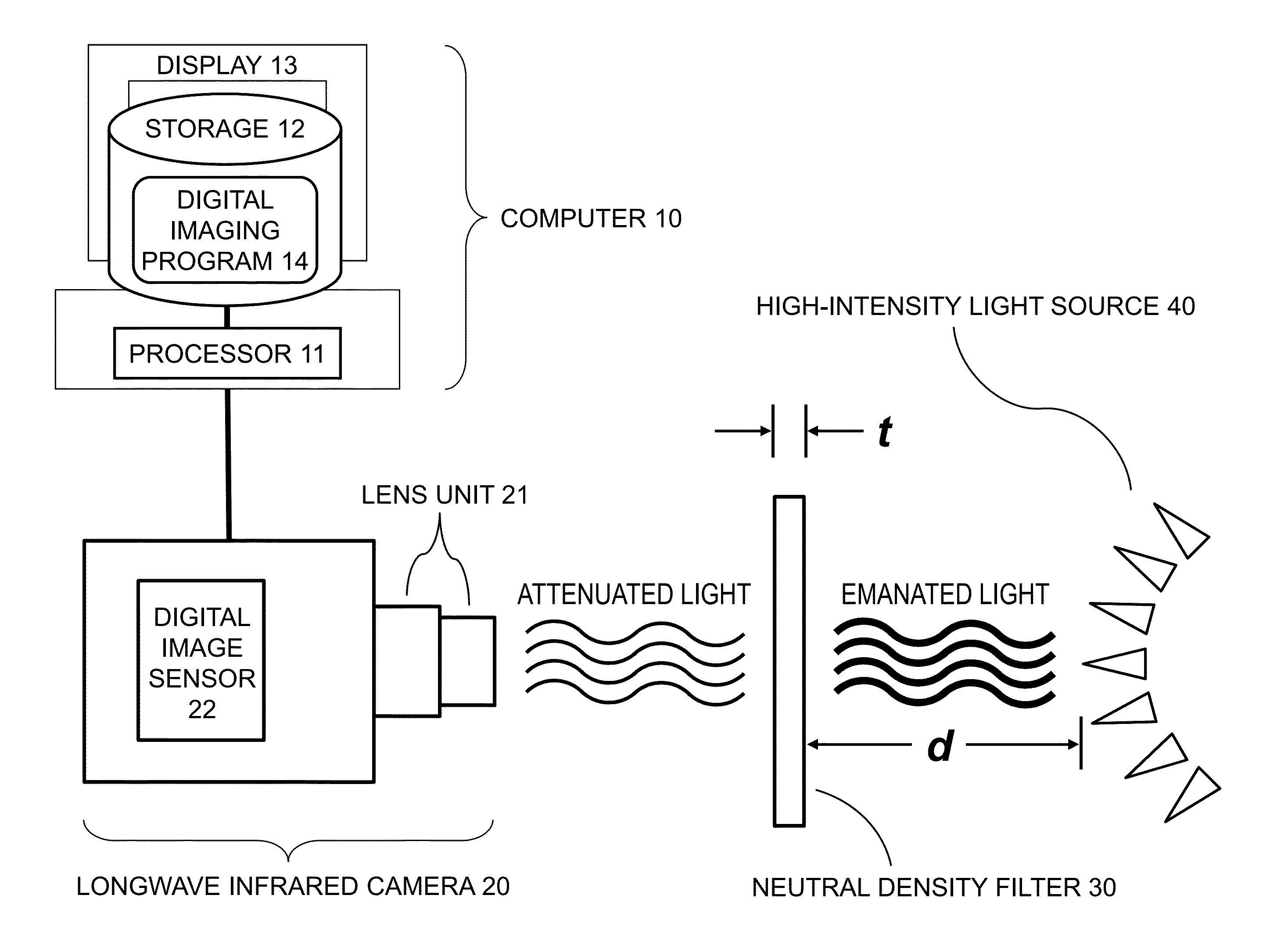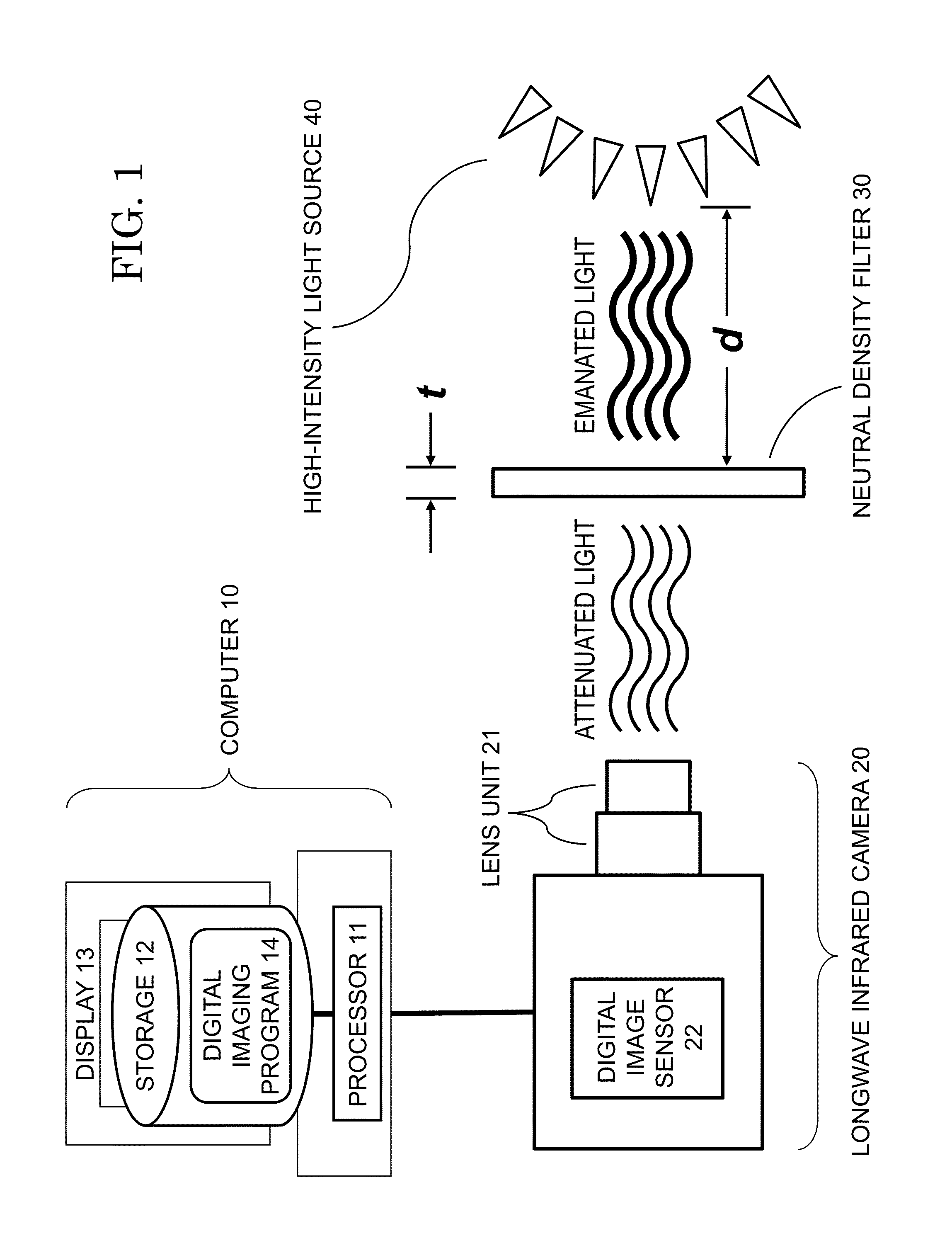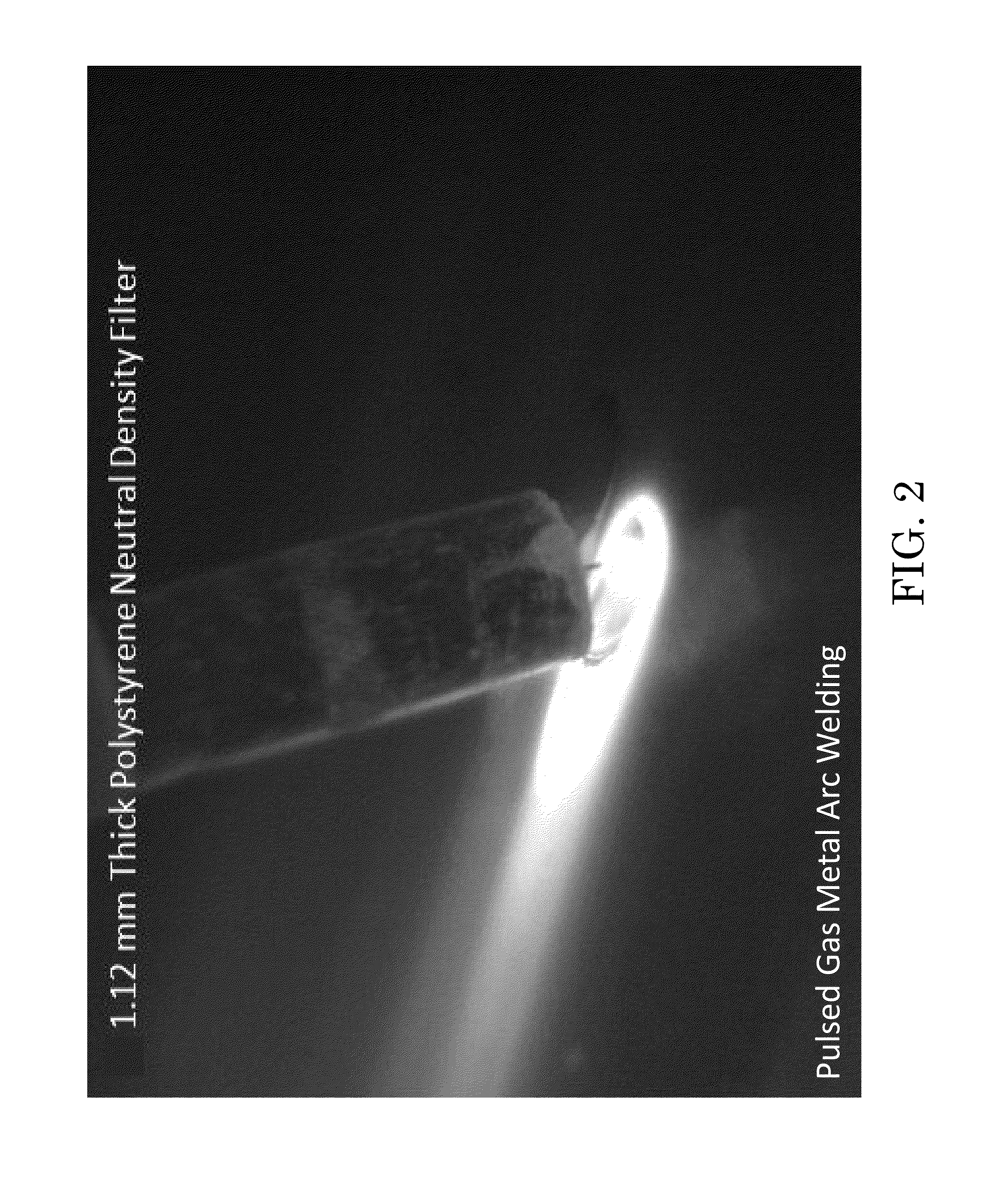Longwave infrared imaging of a high-temperature, high-intensity light source
a high-intensity, light source technology, applied in the field of electromagnetic imaging, can solve the problems of high equipment cost, inability to achieve complete imaging of the weld, and significant degradation of the overall image quality of conventional approaches, so as to reduce the intensity of electromagnetic radiation, reduce the saturation of the focal plane array of the lwir camera, and reduce the overall radiance sensitivity
- Summary
- Abstract
- Description
- Claims
- Application Information
AI Technical Summary
Benefits of technology
Problems solved by technology
Method used
Image
Examples
Embodiment Construction
[0032]Referring now to the figures, according to exemplary practice of the present invention, thermal imaging is conducted of an arc welding process. As illustrated in FIG. 1, an exemplary inventive configuration for imaging a high temperature, high-intensity light source 40 includes a computer system 10, a longwave infrared (LWIR) camera / imager 20, and a neutral density (ND) filter 30. FIG. 1 is diagrammatic in nature and is not intended to convey spatial or dimensional preferences.
[0033]Computer system 10 includes a processor 11, a memory / storage 12 (both volatile and non-volatile), and a display 13. Neutral density (ND) filter 30 has a thickness t and is situated between a longwave infrared camera 20 and a light source 40 (such as an arc welding process). ND filter 30 is situated at a distance d from light source 40 and is nearer to camera 20 than to light source 40, according to exemplary inventive practice. LWIR camera 20, an uncooled thermal imaging camera, includes a lens uni...
PUM
 Login to View More
Login to View More Abstract
Description
Claims
Application Information
 Login to View More
Login to View More - R&D
- Intellectual Property
- Life Sciences
- Materials
- Tech Scout
- Unparalleled Data Quality
- Higher Quality Content
- 60% Fewer Hallucinations
Browse by: Latest US Patents, China's latest patents, Technical Efficacy Thesaurus, Application Domain, Technology Topic, Popular Technical Reports.
© 2025 PatSnap. All rights reserved.Legal|Privacy policy|Modern Slavery Act Transparency Statement|Sitemap|About US| Contact US: help@patsnap.com



